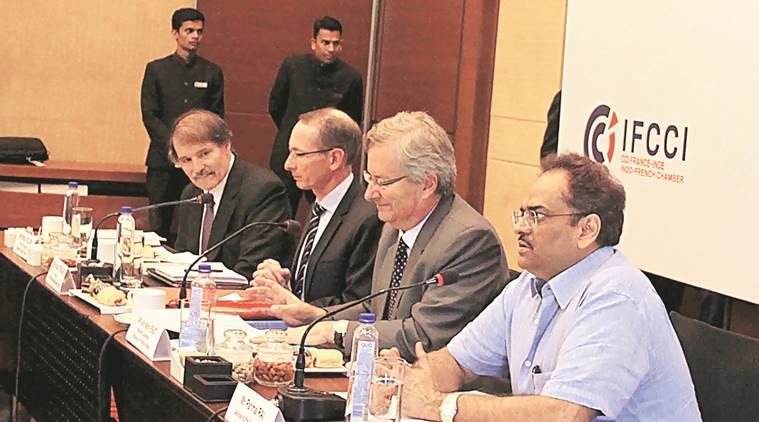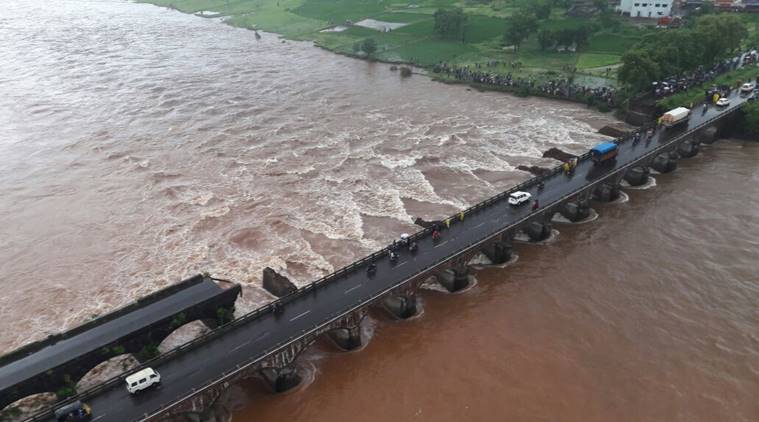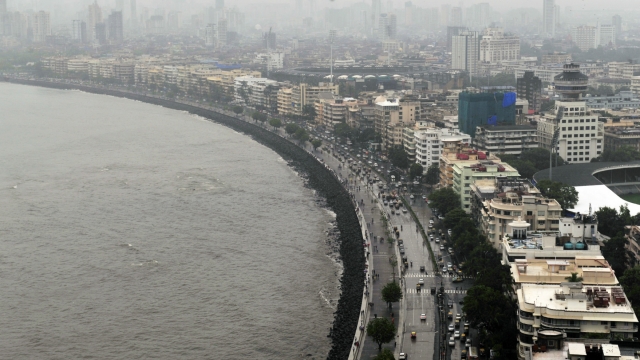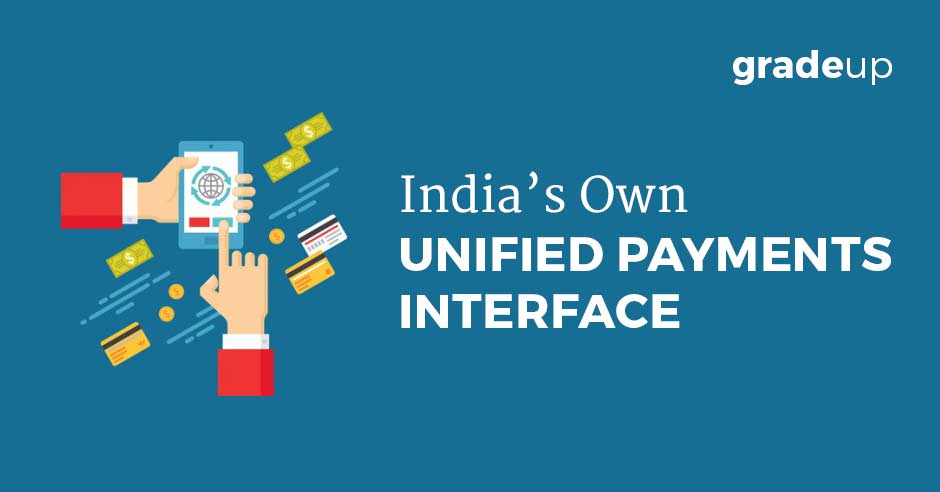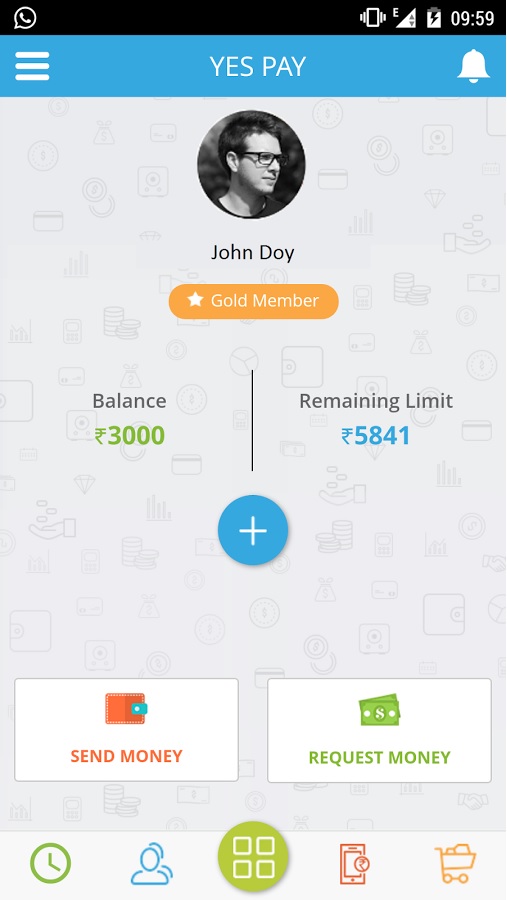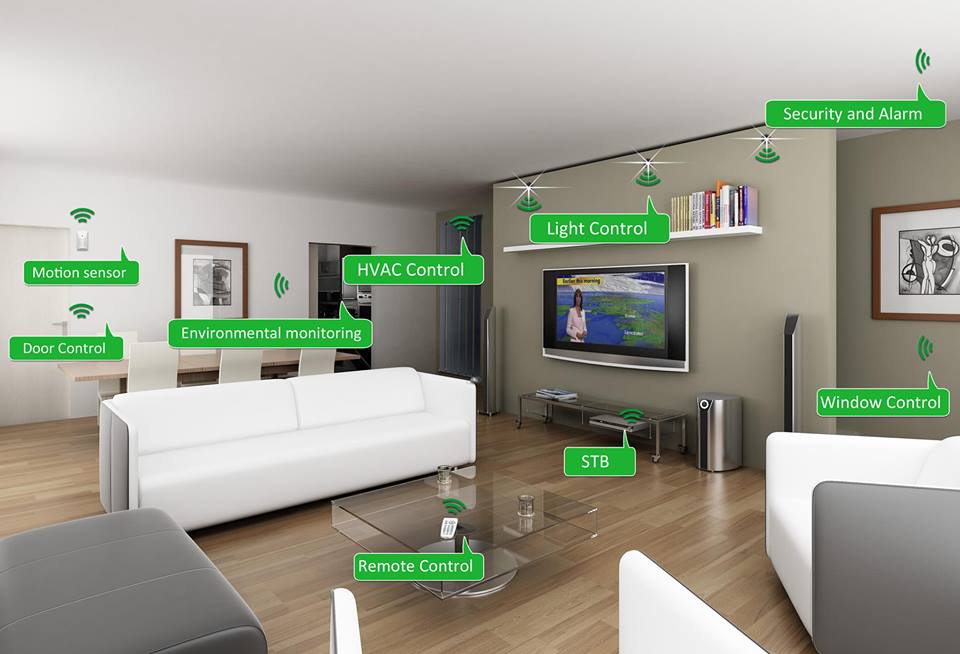French firms take initiative to develop Smart Cities in India
October 20, 2016
With the Smart Cities mission well underway, get ready for a slice of Paris in India! Three cities – Chandigarh, Puducherry and Nagpur – have attracted interest from the French who have proposed to develop them fully into smart cities. Strong on aesthetics as well as energy conservation, the French model of development also focuses on the user at the center of all development.
French consul general to India Yves Perrin says, “My concept of smart cities is based on at least four pillars, namely, energy, transport, water and waste management. These basic things have to be implemented first. Only then can cities be made smart.” ‘Smartness’ is everything that is required to make you comfortable in your daily life, adds Perrin.
One of the French companies already very well-entrenched here is Egis India, the Indian arm of the French engineering major Egis Group. The company has won a contract to develop Bhubaneswar and has also bid for Chandigarh. Tenders for Puducherry and Nagpur are yet to be issued by the two town authorities. However, Egis has separately successfully bid for the Nagpur metro and is already working on the project. “We can provide a metro but if one needs to stand in long queues, this is not fully facilitating,” points out Ashish Tandon, MD, Egis India. “If we only facilitate your commute from one place to another, and that too not very comfortably, and with no last-mile connectivity, then what is the point? It should be such that you are able to very conveniently reach the metro station and also conveniently be able to go where you want when you get out at the other end. Therefore, we have planned bicycles and e-rickshaws for Bhubaneswar. We may even do a light rail transit (LRT). The focus is on inter-modal transport,” says Tandon. (LRT is a series of localised automated guide-way transit systems acting as feeder services to the heavy rail MRT (mass rapid transit)).
Egis has done a lot of work in Paris and the Greater Paris area and one can expect “a lot of commonality between the cities we have done in France and what we will do here,” says Tandon. He adds, “Moreover, we do predictive modeling since we are looking at planning ahead for the next 20 years.”
Another area of strength for France is the digital domain where the country emerged as one of the early spenders globally. “This is an area that comes naturally to them and therefore, you may find a very strong digital infrastructure in whichever city the French associate themselves with. In the areas of traffic automation, car scanners for parking, road safety technologies, etc., you may find very high-tech solutions. Information technology will be the backbone to collate all kinds of data to make life easier for citizens,” says Pratap Padode, Founder and MD, Smart Cities Council India.
He adds that over 30 countries have evinced interest to partner with India for the Smart Cities mission and are interested in picking up business in India. And since there is more than Rs 3 lakh crore that is going to be spent on the mission by the government, obviously, everybody would like to have a slice of this pie. One of the ways to garner a slice, is to finance the master plan for the cities, like France has proposed for Chandigarh, Puducherry and Nagpur and the US for Visakhapatnam. Specifications are then evolved for creating a smart city with inputs from world-class experts and consultants mostly from that country that also enable their own companies to bid for the bigger set of orders for execution and implementation, explains Padode. “It’s a win-win situation because for India, in a sense, we are getting our cities designed for 20-30 years into the future for free. And for France or for any other country, they are able to get business for their companies,” Padode adds.
Till date, two memorandums have been signed, one of them with the US Trade and Development Agency (USTDA) to develop Visakhapatnam, Allahabad and Ajmer, and the other with Agence Francaise de Developpement (AFD). The MoU with AFD is independent of the Smart Cities mission but not unrelated to it and a line of credit will be used to develop Nagpur, Chandigarh and Oulgaret (Puducherry).
Chandigarh already has a French connection, having been planned by noted French architect Le Corbusier. Puducherry has been a former French enclave. And in Nagpur, the French are also interested in the metro project as well as in upcoming industries in the vicinity.
Under the MoU for a period of three years, the technical cooperation programme will make available to Puducherry a pool of French experts from the public sector (French municipalities, local public companies, agencies for urban planning), complemented by experts from the private sector. The experts will be chosen from domains such as sustainable urban development, integrated development and urban planning, urban transport, water and waste management, architecture and heritage, renewable energy and energy efficiency.
“In a larger context, the pool of experts could rotate like a roster between the three Indian cities to which French technical assistance will be provided,” the agreement states. They would essentially focus on areas such as strengthening the strategy and management of urban services, covering integrated development and urban planning, urban transport, water supply, sanitation, waste management, architecture and heritage, renewable energy and energy efficiency.
French firms like Alstom, Dassault, Egis, Lumiplan, RATP Transdev and Schneider are interested in the Smart Cities Mission. High-profile visits have been ongoing for over a year to Puducherry, Nagpur and Chandigarh.
Savitri river bridge collapse gives way to IBMS
October 20, 2016
In August this year, a British-era bridge spanning the Savitri river on the Mumbai-Goa highway collapsed. The tragedy occurred in the dead of the night and over ten vehicles were washed away, killing more than 26 people while 30 people were swept away in the swollen river.
In a country where construction collapses are quite the norm, the government is now waking up to the possibility of using modern technology to ensure the safety of bridges and their timely maintenance. Recently, minister of road transport & highways and shipping Nitin Gadkari, launched the Indian Bridge Management System (IBMS) in New Delhi as a inevitable step.
“IBMS is preparing a database of all bridges in the country and detailing their structural condition so that timely action can be taken to repair the structures or build new ones in their place,” said Gadkari.
In early 2015, the government had roped in IDDC Engineers, an infrastructure development firm, to develop this system. Subsequently, a National Bridge Management Centre (NBMC) was also up in Noida within Indian Academy for Highway Engineers (IAHE). According to an official, so far 1,15,000 bridges have been inventorised, of which 85,000 are culverts and the rest are bridges.
According to a ministry official, during the process each bridge is assigned a unique identification number based on the state, RTO zone and whether it is situated on a national highway, state highway or on a district road. The precise location of the bridge in terms of latitude-longitude is collected through GPS and based on this, it is assigned a bridge location number. Thereafter, engineering characteristics like the design, materials, type of bridge, its age, loading, traffic lane, length, width of carriage way are collected to assign a bridge classification number to the structure.
These are then used to do a structural rating of the building on a scale of 0 to 9, and each bridge is assigned a structural rating number. Based on the data gathered, IBMS will identify bridges that need attention. Accordingly, the ministry will enhance its life and prioritise repair and rehabilitation work, said the official.
According to Jaijit Bhattacharya, partner, infrastructure and government services at KPMG India, this platform is a step towards having an alarm system which will alert the authorities before a bridge collapses or needs urgent repair. “There has been a need to put the sensors below the bridges and connect them to an online platform so that these devices (sensors) should trigger the information before a bridge collapse. This initiative is a great shift towards the vision that every bridge will have its own sensor and online database,” he added.
National highway length in Telangana on the rise
October 20, 2016
The Telangana government has succeeded in getting approval for the 2500-km long national highway (NH) in the state. This was disclosed to the press by chief minister K Chandrasekhar Rao during a review meeting with roads and building (R&B) department at his camp office. This is the highest ever highway length sanctioned by the Centre to a state in the last two and half years.
Seeing this as a compliment from the Centre, the chief minister asked R&B officials to begin planning and take up work on the 330-km Regional Ring Road (RRR) planned to be beyond the existing Outer Ring Road (ORR) of the city. He also bade the officials to prepare a vision document with details of national highways, state highways and connecting roads which are under construction. This document, according to the chief minister, should include details of future needs and expansion requirements of each town and city.
Raising concern over delay in preparing the detailed project reports (DPRS) for various road projects, the chief minister asked the department to divide the work into phases so that the DPR preparation can be completed faster. He directed the department to submit a report on the places where underbridges, flyovers, bridges on rivers and causeways are required and the funds needed to complete construction. Raising concern over increasing road accidents, the CM asked the roads department to come out with proposals to reduce curves on the national and state highways. He wanted construction of more bypass roads so that traffic would get distributed evenly and not pass through populated villages and towns.
IoT, Cloud at the fore for building Smart Cities
October 20, 2016
Internet of Things (IoT) and Cloud are two key components to build Smart Cities and make things work, a la Cisco CEO Chuck Robbins. These two components are now indispensable targets for Cisco to deliver Smart Cities. It makes sense at a time when, from Copenhagen and London to New York City and San Diego, more and more cities are embracing IoT and Cloud data storage to make life simpler and easier for their residents — from the transportation sector to lighting, from smart buildings to parking, et al.
Cisco’s transition to IoT and Cloud, from making routers, network switches and various circuit boards, was announced loud and clear to the world when Robbins took over the reins from the long-serving John Chambers over two years back. However, when it comes to planning Smart Cities in India, the challenges are different. Transportation and lighting are important but healthcare and education are at the fore, which Robbins is aware of.
“It is absolutely amazing to see the technology helping students understand better and transforming healthcare in Indian villages. This is what drives Cisco. Technology today no longer just helps companies achieve monetary goals. Technology exists to solve the deeper problems,” Robbins told the press in Mumbai last week. Robbins announced the launch of Cisco’s manufacturing operations in Pune and, along with the Maharashtra government, promised to build Nagpur as a Smart City, even as the audience have witnessed in real-time the IoT intervention in healthcare and digital education in Fetri village in Nagpur.
“I travel all round the world but it is a true honour to partner with India, with Maharashtra. Look at those innocent faces. We realise that we are working for something special here than other parts of the world. I believe Smart Cities will help build a real India and investing in IoT is the key to achieving it,” Robbins pointed out. In layman terms, a Smart City will offer IoT devices such as connected sensors, lights and electricity meters, etc., which will help improve infrastructure, public utilities and services. It is also about providing city-wide network connectivity, smart and secure Wi-Fi hotspots and smart safety and surveillance solutions. For example, in Copenhagen, where over 40 per cent of the residents commute by bike each day, the city officials use sensors to monitor bike traffic in real time to improve bike routes.
Services that make a city “smart” are based on how and when information is procured and how it is leveraged. “Whether state and local governments want to reduce traffic congestion, optimise emergency response, reduce greenhouse gas emissions, make sanitation more effective or improve citizen services, the key lies in how quality information is collected, analysed and then used for actions and decision-making,” Swapnil Bhatnagar, Research Director, International Data Corporation (IDC) South Asia, told IANS.
At the forefront of delivering Smart Cities, the $49-billion Cisco reported global revenues of $12.6 billion for the quarter ending July 30, 2016. “We came to India in 1995. Currently, we have over 11,000 employees here. The country offers a huge talent pool of highly-qualified scientists, engineers and designers along with ease of doing business, geographic location, and proximity to suppliers and customers. The whole ecosystem is here to build Smart Cities,” Robbins noted. As the migration continues, tier II and tier III cities will need to become more organised and productive to tackle the growing population. Thus, an extensive IoT network is the critical infrastructure to collect real-time (or near-real-time) information from automated sensors which can then be leveraged for smart services.
“For example, optimised public bus systems will require IoT sensors on buses to continually update their location so routing and scheduling can be managed and digital signs can be updated and alerts sent to citizens waiting for buses. Thus, IoT is the most basic and critical piece in the Smart City jigsaw puzzle,” Bhatnagar added. When it comes to data, a secured, hackers-free experience is what enterprises need and connected smart cities will also need to safeguard data. In September, Cisco Systems joined hands with cloud computing major Salesforce to develop solutions that merge Cisco’s web-based video and audio technology and Salesforce’s cloud software for an efficient experience. Cisco has also showcased how patients can be connected with doctors conveniently and efficiently, regardless of distance, through highly-secure immersive visual experiences in India. “Technology can empower rural people in the country and we won’t let you down,” Robbins said.
MoU signed between India and Russia for Smart Cities Scheme
October 19, 2016
India today signed an agreement with Russia for cooperation in the implementation of the Smart Cities programme and the use of IT solutions of Russian companies.
The agreement was signed between JSC Rusinformexport and the Urban Development Ministry, Ministry of Home Affairs, National Buildings Construction Corporation Ltd and the Haryana government, according to an official statement.
The agreement was signed in Goa where Prime Minister Narendra Modi and Russian President Vladimir Putin held extensive talks covering the entire scope of the bilateral engagement. India plans to have 100 smart cities by 2022, out of which 60 have been chosen — 20 in January, 13 in May and 27 last month. The remaining will be picked by 2018.
Aimed at bringing forth a paradigm shift in the way of living in urban India, smart cities will enjoy uninterrupted power and water supply, internet connectivity, e-governance, along with robust infrastructure.
Furthermore, the two countries also closed a number of big-ticket defence deals including purchase of missile systems, frigates and joint production of helicopters besides deciding to deepen cooperation in a range of crucial sectors even as the two close allies resolved to fight the menace of terrorism unitedly.
Mumbai’s ambitious coastal road project set to take off
October 13, 2016
The Rs 11,000-12,000 crore coastal road, linking south Mumbai and Kandivali in the northern suburbs, will only be partially free for users – from Marine Drive only up till Bandra – after which the rest of the road will be constructed as a sea link on which users will have to pay a toll.
While the south Mumbai stretch up to Bandra will be constructed by the Municipal Corporation of Greater Mumbai (MCGM), the stretch between Bandra and Versova will likely be constructed by the Maharashtra State Road Development Corporation (MSRDC).
The cost of the sea link is pegged at Rs 7,500 crore. Maharashtra Chief Minister Devendra Fadnavis, in a meeting, had given instructions for MSRDC to go ahead with constructing the Bandra-Versova sea link, the minutes of which were officially communicated to MSRDC. According to the same, MCGM has been instructed to buy the balance concession period of the Bandra-Worli sea link (constructed by MSRDC) till 2040. As per the cash flows of the Bandra-Worli sea link project, MSRDC has asked MCGM to pay Rs 2,800 crore, based on their book of accounts of the Bandra-Worli sea link. This amount will be the equity of MSRDC towards the project cost of the Bandra-Versova sea link. MSRDC VC and MD, Radheshyam Mopalwar said, “The balance cost of the project will be raised by MSRDC as a loan either by way of vanilla bank loans or as bonds as per our consultants’ advice.”
MCGM sources said they have received a letter from MSRDC to this effect saying that the latter would be constructing the sea link. However, the civic body is not believed to be keen on this alternative as they have already incurred a cost on preparing the detailed project report (DPR) for the entire length of the coastal road, as envisaged earlier.
Mopalwar added that MSRDC already has the coastal authorities’ clearance for constructing a sea-link all the way from Nariman Point to Versova and which is valid till 2018. He also said MSRDC has a tender-ready detailed project report (DPR) for the Bandra-Versova sea link.
Meanwhile, MCGM has Rs 8,000 crore stashed in the bank and expects to garner another Rs 3,000 crore by the end of the year for the project. Sanjay Mukherjee, additional municipal commissioner (Projects), MCGM, said that around Rs 3,000 crore would come from the collections of the proposal to make FSI (floor space index) fungible for the city.
The MCGM charges builders a premium for fungible FSI on all real estate development. “In a sense, we are recovering the cost of construction from prospective users,” Mukherjee explained.
He said MCGM would initially develop the stretch between south Mumbai and Bandra and which has been divided into three packages. A total of 46 companies, foreign and Indian, have responded to the expression of interest (EOI) document floated by it, Mukherjee said. He added that once this was finalized, the request for qualification documents (RFQ) would be floated and subsequently, the shortlisted companies would make it to the request for proposals (RFP) stage.
As per MCGM’s original DPR, the coastal road project was divided into seven parts, three in the south and four in the north with a total of 11 interchanges to help reduce traffic.
The 29.2-km long road was to have a dedicated bus rapid transit system (BRTS) running from south Mumbai to Kandivali, the first of its kind in Mumbai. A provision has also been made in the DPR for a high speed electric train (HSE) track in the middle of the road with a 13-metre wide median that can be used to develop the tracks later if required.
Around 40 hectares of green spaces is to be be created along the road with gardens, parks, jogging and cycling tracks and other civic amenities. Frischmann Prabhu has already been appointed as a consultant and another general consultant too will be roped in.
Healthy start for UPI as banks open Virtual Payments Addresses at brisk pace
October 4, 2016
The ambitious Unified Payments Interface (UPI) platform that was launched by National Payments Corporation (NPCI) last month has got off to a brisk start with banks’ customers having started opening their virtual payment addresses at a fairly rapid pace. With this system, customers have to open a virtual payments address of their choice and link it to any bank account. The VPA acts as their financial address and users need not remember the beneficiary’s account number, IFSC codes or net banking user id/passwords for sending or receiving money. The VPA acts as a financial address for a user in lieu of their 16-digit bank account number and the 11-digit IFSC code.
ICICI Bank, the country’s largest private sector bank, said it has crossed the milestone of 1 lakh Virtual Payment Addresses (VPA) on ‘Unified Payments Interface’ (UPI) within three weeks of its launch. With this, customers of any bank who have created their VPA on ‘Pockets’ as well as ICICI Bank customers using ‘iMobile’ can soon pay using their smartphones at over 6,500 Hindustan Petroleum Corporation Limited (HPCL) petrol pumps and more than 2,000 stores of Aditya Birla Fashion and Retail Limited (ABFRL) across the country. The bank has tied up with ABFRL and HPCL to offer UPI-based payments at its retail outlets.
“I’m delighted to share that ICICI Bank has crossed the milestone of creating 1 lakh VPAs for enabling UPI based payments, within three weeks of its launch. We have received an encouraging response from users including non-ICICI Bank customers for creating their VPA using ‘Pockets,” Chanda Kochhar, MD & CEO, ICICI Bank said. She also said ICICI Bank intends to continue exploring more such potential partnerships (like HPCL ABFRL) which will go a long way in popularising the usage of UPI. “I believe that UPI will revolutionise the landscape of electronic payments in India and go a long way in reducing the usage of cash in the economy,” she added.
A. P. Hota, MD & CEO, NPCI lauded ICICI Bank’s effort and said the lender was among the frontrunners to launch UPI through the app. “Transactions on a real-time basis via mobile app has not been made possible anywhere else in the world. Considering the ease of transactions offered by UPI, in the days to come more customers will get accustomed to UPI based transactions,” Mr Hota said.
The upgraded ‘iMobile’ application of ICICI Bank comprising UPI services is available on the smartphones with Android and iOS operating systems.
YES TAG gains momentum as it crosses 10,000 transactions
October 4, 2016
YES TAG – a Chatbot-based banking app from private sector lender YES Bank is gaining momentum as it has crossed a major milestone of 10,000 transactions. The application enables users to carry on seamless chat banking on five messaging platforms, namely, Facebook Messenger, Twitter, Skype, Telegram and WeChat. In other words, YES Bank customers can do a banking transaction or make an enquiry while chatting with their friends or relatives.
YES TAG app enables the chat bot to perform easy, anywhere and anytime banking. For instance, users can simply launch Facebook Messenger app from YES TAG and send ‘BAL’ to the YES BANK bot to know their account balance. Customers can also check their recent transactions, do a fixed deposit enquiry, request a cheque book and much more. The Chatbot-based YES TAG can even transfer funds instantly to registered beneficiaries.
The unique benefit of this bot is that the user does not need to open or login into a separate app for carrying out banking transactions. YES TAG enables users to access banking service from any of the five chat platforms – be it while chatting with friend(s) on Facebook Messenger or tweeting on Twitter; or even while on a Skype call with a distant relative!
“We want to give our customers a personal concierge that gets all banking tasks done. YES TAG’s smart bot will soon recharge customers’ mobile/DTH, hot-list cards, register for e-statements, and even pay their bills,” said Ritesh Pai, Senior President & Country Head, Digital Banking, YES Bank.
The lender is also working on developing advanced artificial intelligence and multi-lingual profficiencies for these services. The bank is set to enhance capabilities of its chatbot to lead customers all the way to the nearest YES Bank branch or ATM should they need assistance, even after befriending this intelligent bot on the app-store.
The Internet of Office
October 3, 2016
Smartphones, smartwatches, smart glasses: we are surrounded by intelligent, data-driven technology aimed at optimizing every area of our lives.
Yet a gadget is just the beginning of this expansive, sometimes complex relationship. Its real potential lies in the network of relationships that emerge among these devices. Connected, smart devices and their attendant applications represent the next big leap in human-computer interaction: the intelligent workplace.
What is the intelligent workplace?
For a moment contemplate the role of your Smartphone in your average workday. It is your portable office — you can check email, edit documents, and monitor performance from anywhere. Beyond those basic functions, a host of applications have surfaced to meet certain professional needs. Smart devices enable you to crowdsource important information in real time, get directions to your next meeting straight from your smartwatch, or receive a notification that you’ve exceeded your budget limit for the ongoing month. In effect, the infrastructure of the smart office — smartphones, wearables, and applications — is already in place. All that’s missing is the foundation to bring it all together.
It is here that businesses have a unique advantage. Companies, like salesforce.com, have started creating products that span multiple devices and provide a platform for building custom apps that integrate existing products and services.
So what will the smart office look like? Let’s take a look at four key areas.
Collective intelligence
Imagine having access to your entire organization to answer a customer question or give feedback on a new marketing idea. While two heads are better than one, 100 heads working together can change the world. Connecting people across your company enhances accuracy and productivity. If a social media manager gets a question about her product’s API, she no longer has to fumble for a documentation page; instead, she can reach out to the product team (via Chatter, in some cases) for an answer within minutes. You can connect the right person, at the right time, no matter where you are.
Connected products
In the past, the first sign of trouble came when a product broke down; today, each component of a smart device can monitor its condition and alert technicians when service is required. Connected products can also offer unprecedented insight. Disneyland is replacing traditional tickets with MagicBands, smart bracelets that serve as a visitor’s ticket and payment method while also tracking her spending habits, movement, and wait times for rides. Using this data, park managers can control traffic and develop targeted marketing campaigns.
Connected environments
Devices like Philips’s hue light bulbs and Google’s Nest thermostat turn a smart office into an intelligent ecosystem. Office managers can crowdsource the optimal workplace temperature (imagine: no more fights about whether it’s too hot or too cold!) or notify a sales rep that his next appointment has arrived. Similarly, sales reps in the field can map nearby prospects and monitor recent activity on different accounts.
Business Intelligence
A smart workplace also helps make sense of broad swaths of data, presenting only the most pertinent and actionable insights to employees. When you open your business app on your mobile, you don’t see your entire calendar, just a list of the day’s events and tasks. When you research a prospect, you see her most recent activity rather than a flood of superfluous information. Your performance analytics are carefully curated and delivered to a dashboard at your phone. Instead of a burden, your data becomes a competitive edge.
As devices continue to connect us, we are becoming part of much more than an office. It’s time to start thinking strategically about how to bring your company and your workplace together for an unprecedented degree of sophistication and intelligence.
Leading the Smart way for Waste Management
October 3, 2016
Municipal solid waste (MSW) management is an area that needs attention, especially considering the Smart Cities Program. Meet Suhas Dixit, CMD, Pyrocrat Systems LLP, whose work at Navi Mumbai is surely a case study for all to emulate. Among the few companies in India that offer the patented pyrolysis technology that converts waste into energy, Pyrocrat is helping the city of Navi Mumbai to recycle 300 metric tonnes (about 50 truckloads) of waste. This is segregated and converted into compost, recyclables (plastic, metal, etc.), refuse-derived fuel (RDF) and inert gases. Dixit provides some insights.
What is the scope of your work in India?
We are a company that manages 300,000 tonnes of municipal solid waste per day. Unlike in developed countries where people segregate their wet waste from dry waste, in India, we put it all together. If you separate this waste, it can be recycled. Therefore, the first step required is segregation and we are a specialist at this since it is not segregated at the source. We then convert this into energy. We convert waste plastic and waste tyres into diesel. We are present in two sectors of waste management, namely, recycling and energy recovery. We see huge gaps in these areas as the energy recovery segment doesn’t even exist in India right now. What people do is, in case they cannot recycle the waste, they put it in landfills.
However, for a waste management project to be sustainable, it is not enough to think of the social aspects. Since not enough importance is given to economic viability, most waste management projects end up as failures. When you want to come up with a sustainable project for waste management, you have to think about three things – social appeal, environment compliance and economic viability. This is where organisations like us are specialized.
How big is the problem?
In developed countries, they recycle 80 per cent of the waste and not a great deal of wasteland gets generated. If you consider developing economies like India, South Africa and China, huge quantities of wastelands are created like ulcer patches on the earth. These patches release methane gas which is 10 times more potent than carbon dioxide. It is also the cause of the foul odour you associate with dumping yards. Around 5-10 per cent of global warming is happening because of methane coming out from dumping yards.
Specific to India, just for instance, in 2012, across the country, the number of oil barrels that went to landfills is 57 million barrels of oil, 9 million tonne of compost and 6 million tonne of recycled material. In India, around 1.3 per cent of its land is getting converted into wasteland every year. Around four-five years ago, we didn’t have the problem of finding space for landfills. Now, there is a shortage. What people are doing now is they have started stacking up the waste above each other. The height of landfill has now gone up to a height equivalent to the fourth and fifth floors of buildings.
What are the technologies to deal with this?
The key technologies for managing waste include composting where you convert a major part of the waste into compost. This compost can further be converted into fertilizers or can be used as compost, as it is. The second technology is refuse-derived fuel (RDF). We have this technology operational in Chandigarh. In Navi Mumbai, we use composting technology and in Chandigarh we use RDF. The third technology available is bio-methanation but this technology is risky.
How many companies are there in the country that does what you do?
We are the leaders for this in Asia. In the world, we rank about third or fourth. Nobody is near us. For instance, in the first technology, we are the only ones who have established a plant as an engineering company, and which is operational. Nobody does segregation and nobody does composting. Waste management up till now, was a huge model of corruption. However, with the new government in place and the Smart Cities mission, a lot of these tenders are beginning to come up for re-tendering. This shows that the focus is on actually finding the right companies for the job and the focus clearly seems to be on implementation.
